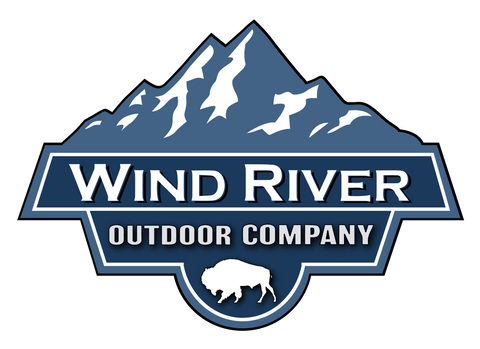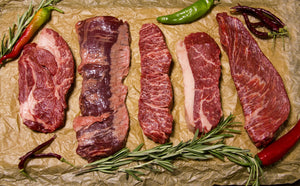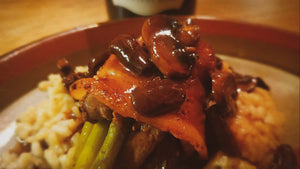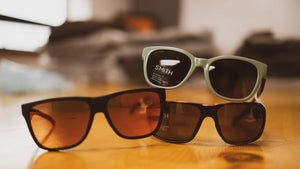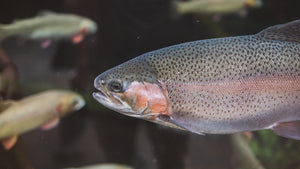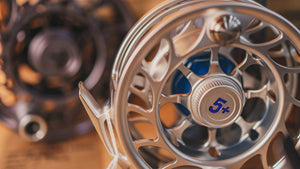WROC Gear Review

Four (Often Overlooked) Health Benefits of Wild Game 0
Many of us crave the 4AM alarm clock during the fall and winter months, for we know that the day will be filled with adventure and a chance to put some meat in the freezer. We spend the year getting in shape, honing our shooting and stalking skills, and having every tool known to mankind. However, it could be argued that an even more visceral reason hit to the field is to fill that freezer with the highest quality protein sources available because, in the end, that is what the hunting season is all about - food. Below are 4 key reasons that wild game is healthier than our traditional protein sources: beef, chicken, and pork. Simply put, wild game should be on your menu if you're looking for a new level of healthy protein.
Leaner
Fat is vital for our bodies to function, and it should be noted that fat is not necessarily bad. However, too much fat in a conventional American diet can tip the scales to the unhealthy side. Wild game is naturally very lean due to the lifestyle they live. These animals don't live in a feedlot – they are out there surviving off what the land provides. A study conducted by Penn State shows a 3.5 ounce cut of beef has 2.7 grams of fat. Meanwhile, an identical amount of whitetail deer contains 1.4 grams. That is almost 50% less fat with just as much protein!
The Right Fat
As stated above, the human body needs fat to survive. However, the type of fat being consumed is a more significant factor than many Americans would assume. Specific fats are critical to developing and maintaining a healthy lifestyle. The "good fats" are Omega 3 and Omega 6 type fats….in the proper ratio. Omega 6 fats are found in nuts and conventional grain-fed cattle, pork, and chicken. Omega 3 fats are found in wild fish and game, soybeans, and tofu. The problem is that the modern diet contains too much Omega 6 and not enough Omega 3 fats. Beef can have a ratio of 13 to 1 Omega 6 to Omega 3. Wild game meat has a much lower ratio – down around 3 to 1. Research shows that eating protein sources that balance this ratio lowers cholesterol and decreases cardiovascular disease and strokes. Don't get me wrong – I love a great Angus Rib Eye, but just consume in moderation and get as much wild game in your diet as possible to balance out the Omega 6/Omega 3 ratio.
Hormone Free
Wild game is just as the name states – wild. Conventional protein sources are frequently given hormones to increase growth and add weight beyond what can naturally occur. The hormones don't just magically leave the animal in a blink of an eye, and the question is – what does that do to us when we eat them? Many scoff at this notion, but it should be a discussion point for those who want or need to know their food.
Taste
The taste of wild game spans the palate. From the rich, robust, and deep flavor of a Canadian Goose breast to a mild cut of venison tenderloin, wild game has just about any taste someone is looking for…..or not looking for. Remember, how you treat the game in the field has a significant impact on the end result on the table so go to the field prepared to maximize the palatability of your harvest. Any harvest should be immediately cleaned thoroughly and cooled. People often roll their noses at Pronghorn Antelope, but this is one of the finest cuts of meat around…..when treated with care and respect from the time of the harvest to the table. Again, go prepared to quickly harvest, clean, and cool your game, and you will be shocked at the high-quality protein that you put on the menu for your friends, family, and guests!
Links:
Penn State Article: Fat and Cholesterol Content Of Wild Game
- Ron Hansen

Supply Chain Woes are Here for the Foreseeable Future: Here's the Rundown! 0
Covid-19 has brought about some serious issues to our everyday lives – health concerns, shutdowns, labor, and supply chain horrors. While some of these issues are getting better, supply chain woes continue to be an issue and will be for some time to come in the outdoor industry.
When Covid hit in 2020, the supply chain for outdoor recreational orientated products was in pretty good shape as inventory was available, prices were stable and the outlook was good. Nobody could even imagine the storm that was brewing and headed our way as the Covid pandemic began to affect every aspect of our daily lives. The outdoor industry saw increased participation as people were looking for activities that kept their minds at ease and lessened the chances of infection with Covid. As a result, inventory was getting snatched up at record paces all over the Nation.
2021 saw the boom in outdoor recreation continue and quickly depleted fragile inventory stocks and with the labor issues, getting restocked was a problem. The year was basically a mess from top to bottom and it seemed as though as one area was stabilized; other areas became a problem. There was no question that vendors were having a hard time getting caught up but we could see that these issues were improving as we approached the 4th quarter. Some areas never could get caught up and as a result, the prices of these items started to see a noticeable increase. Ammunition, premium knives, and fishing-related gear fit squarely in this latter category.
As we enter into 2022, we all know that prices are increasing at alarming rates. On top of those, we are beginning to experience an entirely new set of problems – trucking. Simply put, this year is setting up to be just as chaotic as 2021 but with much higher retail prices. Trucking companies are short-staffed and demand for their services is at an all-time high. As a result, freight rates are through the proverbial roof, and even worse, it is incredibly difficult for trucking companies to justify trips to Wyoming due to the lack of backhaul opportunities. Production problems are persisting with vendors as well, so we fully expect more of the same even though everyone is working as hard as ever to “right the ship”.
Many are probably wondering, “when will this end, and what is the end effect going to be?” To be quite frank, time will settle this out but it is going to take years. Vendors are openly telling us that their supply chain issues will not be completely solved until a minimum of 2024 and that is as long as the world deals with the Covid epidemic in a way that opens production back up and that the labor participation rates reach pre-pandemic levels. With that being said, here are the things that will continue to see chaotic activity in 2022 and beyond:
- Fly fishing patterns
- Fishing lures and terminal tackle
- Fishing rods – both conventional and fly fishing
- Footwear
- Ammunition
- Knives and multi-tools
The simple takeaway of this is to not wait if you can spare the expense for something that is in stock. It is only a matter of time before your sought-after outdoor goods become even more expensive due to the slow supply and consequently high demand. Also, be prepared to go to option B or C because option A may not be readily available. Spend time in your local fly and outdoor shops to understand where their orders stand and get your name placed on the waiting list for specific products because the early bird will get the worm in this game. Finally, everyone needs to just take a step back and realize that we are all in this together and we all want Covid behind us. Nobody likes the stress and not knowing what tomorrow is going to bring, but only through a calm and collective approach will this series of unfortunate events get behind us. Tight lines!
- Ron Hansen

WROC Recipes: Bacon Wrapped Duck Breast with Mushroom Port Sauce 1

Wind River Outdoor Company is Wyoming's premier specialty outdoor store specializing in fly fishing, hunting, camping, and all things outdoors. Needless to say, we happen to get out in the outdoors a lot, and as we all love to cook (and eat), we thought it might be a good idea to share some of our best (top-secret) recipes for you to give a try the next time you head out and partake in the bounty of the great State of Wyoming and beyond.
Waterfowl season is upon us here in Wyoming, and the bounty from the sky can make for some tasty eats if you treat them with some love and preparation ahead of time. This is Wind River Outdoor Company's first recipe, and we chose it over big game and upland birds, so you know it has to be good! I have to admit, though, that waterfowl can be pretty strong/gamey, and for this reason, you have to prep well in advance to minimize this fact. Serve this dish with a creamy mushroom risotto, and you will have a dish that will blow people away!
One of the keys to this dish is ensuring that the duck breasts are cleaned thoroughly and all blood, feathers, etc., are entirely removed. Try to use puddle ducks such as Mallard, Gadwall, or Teal as far as your ducks go. If you can get Pintail, then go for it, but those are pretty uncommon in Wyoming, so we generally cook this recipe using Mallards. Stay away from diver ducks as they are much too strong in flavor for this recipe, in my opinion. Next, brine the breasts in saltwater for 6-8 hours to help remove some of the gamey taste. After 8 hours, put the breast in the marinade and refrigerate overnight. This marinade will work for six breasts and is as follows:
2 cups orange juice
Juice of 1 lemon
2 tablespoons of red wine
2 tablespoons honey
3 tablespoons extra virgin olive oil
2 heaping tablespoons of minced garlic
*note, you will have to heat the marinade to get the honey to incorporate fully. Make sure to chill the marinade before pouring over duck breasts and refrigerating.

Next, time to start the sauce as this takes some time. Take an entire bottle of ruby port (750ml) and pour it into a saucepan. Don't use the cheap stuff because it is too sweet and doesn't have the depth of flavor that good bottles have. I used Ficklin 10 year Tawny Port. Bring this liquid to a gentle boil and let it reduce to half of the original volume. This will take about 30 to 45 minutes (sometimes longer) so do this before cooking the duck. Additionally, DO NOT let it get too hot as it can burn and become worthless. In a separate skillet, put half a stick of butter into the pan. Slice up two containers of fresh mushrooms of your choice and brown them. Make sure to season to your liking. Remove from heat when mushrooms are browned and reduced to half their original size. Add them to the reduced port sauce when it becomes half the original volume. Next, add two tablespoons of garlic juice and stir to integrate it into the sauce. Finally, gently introduce a corn starch slurry (2 tablespoons of corn starch and one cup cold chicken broth that have been mixed very well) into the port sauce and stir until thickened. Once thickened, turn the heat off and place a lid on the saucepan.
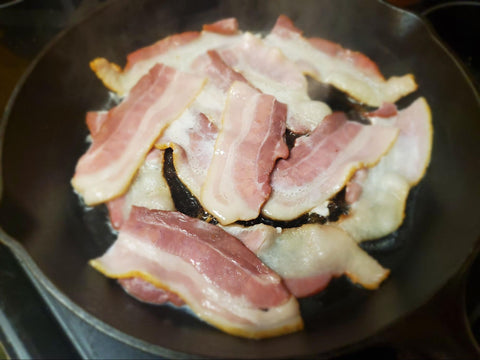
Now for the main treat. First, get a heavy cast-iron skillet. You will need to cook 10 slices of bacon in the pan so that you can use the remnant bacon fat for cooking the duck. Don't worry - I am sure you can find a use for this bacon somewhere in your daily life! Mine did not make it ten minutes before we had devoured it.
Next, take the boneless and skinless duck breasts, wrap them each in bacon, and include 3 to 4 asparagus spears while wrapping them up. Secure with toothpicks. Place in skillet and generously season with salt, pepper, and a dash of creole seasoning for a little zip. Turn the heat on the skillet to medium and cook the breast side of the wrapped duck breasts until they are brown, and then turn them to brown the other side. Preheat your oven to 325 degrees. After the bacon-wrapped breasts are browned, place the skillet with the duck breasts in the oven to finish them out. Make sure the pan has a little bit of liquid in it before going into the oven. Cook about 5 to 7 minutes until duck breasts are just a bit more cooked than medium-rare.

The risotto is super good and extremely important in this dish. The earthiness pairs very well with the duck, and the creaminess is to die for. Take 1 ½ cups arborio rice and place them in a pot with olive oil. Once the rice begins to crackle, add one ladle of seasoned chicken stock at a time and begin to stir. When the liquid is absorbed, add another ladle of stock and continue for 15 minutes or so. When rice is full and done cooking, add a couple of pads of butter, a good pinch of pepper to taste, and some fresh parsley. Now, slowly stir in one cup of parmesan cheese and let the magic happen. That cheese will slowly melt and bring the rice together into a fantastic creamy dish. The parmesan cheese is slightly salty, so make sure you only salt the rice dish after putting the parm in; otherwise, you could make it too salty. I am drooling at this point as I could eat a wheel barrel full of this rice dish. It's SO good!

Place bacon-wrapped duck breast on a bed of the risotto and top with the mushroom port reduction sauce, and you will simply blow your family or friends away. The duck should be slightly more than medium rare - just be careful not to overcook the duck because when that happens, they become like a rubber tire and pretty unappetizing. Serve with a nice Pinot Noir wine from the One Stop Market, and you will look like an outdoor chef superstar! We paired it with Duck Pond Natural Path Pinot Noir - Oregon, and the combination was nothing short of a dream! Enjoy!
- Ron Hansen

New Sunglasses from Oakley and Smith! 0
Naturally, as we all know too well, seasons change, and so do our apparel needs. As the four seasons follow one another, seasonal goods and activities differ. Smith Sunglasses work around the calendar to enhance contrast and natural color with the stellar Chromapop feature. All for where those good times may lead.
Whether taking a cruise up the mountain to gaze at renowned fall foliage or a perfectly crisp day testing out a freshly tied fly on the River, the polarized feature certainly adds definition to what the naked eye cannot see on its own. While on the water especially, glare and visibility are all too guilty of being a nuisance. Thankfully, the Castaway optics not only offer the classic look to boot, but it remedies all of those glares the water throws back at anglers. When it comes to how we see the world, obnoxious glare can become a visual watermark on what makes moments particularly special.
On top of that, setting significant intent on quality over quantity is a huge factor in deciding what frames and lenses will hold value and withstand the test of time. This is where the decision to purchase the “Caper” style can be made incredibly simple. As with all Smith sunglasses, the Carbonic lenses are essential for those days where impact takes its natural toll. All while maintaining clear optics. Gratifyingly, the lightweight materials used alongside the clean vintage proportions complete the ideal women’s look for any active lifestyle.
Reflections are a true telltale sign of where we have been and where we are going...unless eye strain interrupts a moment of fore-seen clarity. Suggesting there is only one genuine act of crime behind sunny days: reflections. Before breaking into a sweat just yet, not only does the Lowdown style halt unwarranted reflections in their lenses. The bio-based frames are accommodated with rubber nose pads for the ultimate “get a grip” feature.
With a purchase this practical, fitting all needs when paired with a look that exudes confidence, where can one go wrong?
Click here to shop all the new styles!


- Brenna Graham

Temps and Trout – A Key to Fish Survival 0
Writing about fish dying is not a subject I like; however, it is one that is going to be a big issue as this summer goes on. We all know it is hot, dry, and that water is in short supply all across the West. These conditions spell a coming disaster for all our wildlife and habitats but really pose a great danger for our trout fisheries. Simply stated, Trout require cold water to thrive and as this hot summer goes on, the water temps will increase – that is not a new discovery but one that we need to be aware of to prevent fish die off events.
The point of this blog is to make anglers aware of the dangers that rising water temps pose to trout and grayling and how the actions of angling may increase the rate of mortality of the fish we so love. The issue is that warm water has less ability to hold oxygen than that of cold water and the result is that Trout will begin to experience stress the higher the water temps climb. Just think of how we respond when we go out in 100-degree days – the trout experience the same level of stress. Generally speaking, trout do not survive in waters greater than 75 degrees. Furthermore, trout begin to struggle to obtain oxygen, process bodily functions and cope with the stresses of being caught in water greater than 68 degrees.
Why does this matter? When Trout are caught, they expend a great deal of energy “fighting” and they become stressed. Under water condition where the water temps are less than 65 degrees then the fish is able to process more oxygen out of the water and they are able to handle/process the stress much better. However, when those water temperatures climb over 65 degrees then that ability becomes much less and as a result, there is a drastically higher mortality rate from catch and release angling. For this reason, it is highly recommended that all fishing ceases in water temperatures that are in excess of 65 degrees unless you plan on keeping your catch.
There are many areas across the West – particularly Montana - that institute rules that are referred to as “Hoot Owl” restrictions. Under this situation, fishing is prohibited generally from early afternoon until midnight so that fish have the ability to make it through the hottest part of each day without the additional stress of being caught and landed. Trout respond to these hot temps by finding the coolest part of streams and basically becoming almost dormant until the water temps come down to levels that allow for the bodily functions and most importantly, breathing, to becoming less stressful. Not all waters (or states) institute “hoot owl” restrictions but that does not mean that the angling community should not exercise restraint on our activities when the conditions are becoming detrimental to our beloved trout.
Taking all of this into consideration, unless you plan on keeping a few fish, it is advisable that when water temps climb above 65 degrees we should cease our fishing activities until such time as the water temps have reached safe limits for our quarry. Those hot days are the times to sit in the shade, sip on a cool beverage, even play golf or take a nap. We all value our fisheries but sometimes that means that we have to forego our love of angling so that we have a viable fishery in the future. Remember, a little bit of effort now will pay off in spades when our weather pattern gets back to an El Nino flow and we have more precipitation and cooler temperatures.
Remember, when water temps hit 65 or higher, it’s best to call it and day and put the rods away.
- Ron Hansen
- Tags: Fishing Fly Fishing Trout Weather Patterns

The All New Hatch Iconic Fly Fishing Reel 0
You probably remember beginning to feel the limitations of your first fly fishing combo. Maybe your reel's drag imploded on the first decent fish you tied into, maybe it was the hundredth. Maybe it still developed a squeak after being deformed by falling on your face, distracted by rising trout when you should have been looking at where you were putting your feet. Maybe you just had a sneaking suspicion that the reason you lost that BKC (Biggest Known Catch) was the garbage you were trying to break its run with.
So you saved your money, and searched out reviews, looking for the best gear you could find. All of a sudden, the money you put into getting into the next tier of gear got you things like machined aluminum billets, graphite fast action, carbon fiber disk drags, and burl wood inserts. And as you ramped up your gear, you spent less time thinking about the limitations of your kit, and more time focusing on being in the moment, connecting the dots.
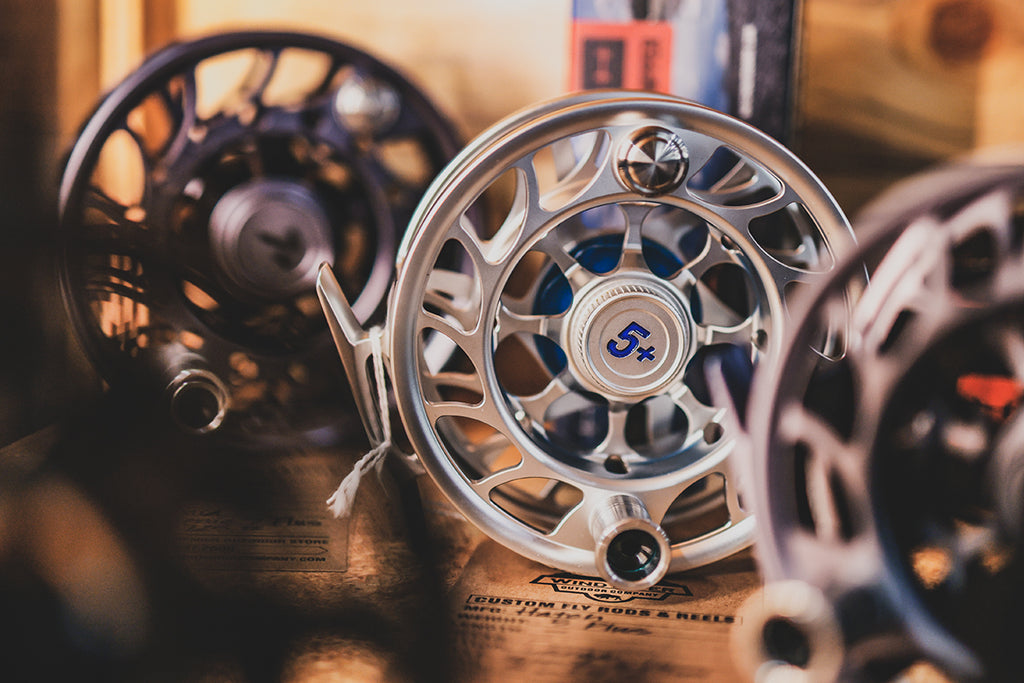
I'll be the first to tell you, better gear won't make you a better fisherman... but it certainly won't stand in your way. Helping you define whether it's your gear or your skill set, let us herald the arrival of the new Iconic series from Hatch. Hatch Outdoors has been at the forefront of American Made fly fishing reels since 2003 when the limitations of inferior gear drove the founder to innovate. Never one to rest on their laurels, and building on the success of the much loved Finatic Series, Hatch has once again innovated and come out with a new line of lighter, better-designed mid and large arbor reel to handle anything the piscatorial world has to throw at it.
- Joe Lefevre - Fly Fishing Manager
Click HERE to Shop the Hatch Iconic

- Kyle Hessling
- Tags: Fishing Fly Fishing Outdoors

WROC Photography Share: Beautiful Mama Bear and Cubs 1
A couple weekends ago, I took a day trip to Teton park, and I managed to get one of the best wildlife photos I've ever taken in my entire life!- Kyle Hessling

Best Portable Camping Stoves for 2021! 0
When it comes to camp stoves, there are a lot of variables to take into consideration. The ideal stove depends on your camping style, location, and means of transportation. The current offerings are all fantastically usable, packable, and efficient, but each stove has a specific customer in mind.
In this video, Josh goes through each of the current market favorites. Josh has immense experience with these products and can tell you exactly what you need to know before buying.
Check out the video, and use the links below to shop our online inventory! You can also use the top menu on the site, and navigate over to Shopping>Camping>Stoves to see our full selection!
Stoves in the video:
